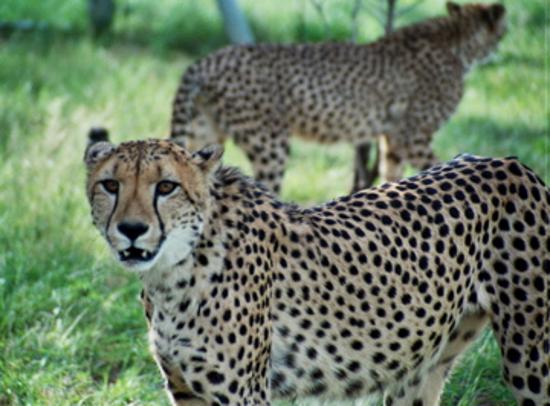And, with today's human lifestyle, there is very little they can do to keep away from us.
Is confining them to small reserves the solution? They were free roaming cats and they might move beyond the reserve fences which you have built.
Cheetahs live in open grasslands which many at times serve as grazing land for livestock. The farmers tend to shoot or kill them in any other manner, when they are found to be attacking the livestock. The Cheetah Conservation Fund, works for a sustainable, mutually beneficial relationship between these farmers and the cheetahs who share the same environment. CCF started its work in Namibia and has now started to extend to other parts of Africa too. They try to educate, and also provide feasible simple solutions to the farmers to try, such that they do not have to resolve to kill the cheetahs in case they are seen to trespass on private property.
Panthera is another organization which was set up with an aim to protect and enable symbiotic relationships between large cats across the world and the people who live near their habitat. Lions are the least affected amongst the cats, maybe because they are not seen to be of any great aesthetic value to the homes of the rich and famous. Good for them, they were spared.
In India too, I believe we need to understand the concerns of the villagers who live in and around the reserves. There has to be a reason why they do not care of the jungle and the animals that live in them, and I think a reason more than money should exist for it. At their position, money can be only a driving factor to an extend, I think there has to be a low understanding of how these animals are useful to them, and how they being in the jungle will serve to be more monetarily beneficial in the long run.
I would not suggest that the monetary aspect alone be highlighted, but this can be a factor to create an urge within the villagers to protect the animals from poachers. I have seen in Kenya that there are many Masai villages just outside the reserve, and they charge a fee and take the tourists around their village and explain their way of life. This ensures an income for the villagers, but the tourists come in the first place all because of the wildlife in the Masai region. I am sure that every Indian village has abundant information to offer to tourists. Ours is a country with varying practices across the states, and many of these draw their roots in practices in villages, which would be an interesting aspect for a traveller. These need to be cashed in on for the sake of the villagers and also the cats which live around these villages.

I hv seen that villagers are one protective lot @ Tadoba reserve here. They care so much abt the place ... dnt leave a single plastic cover to be lying arnd and make the best guides on Safari.
ReplyDeleteyeah..you are right..
ReplyDeleteIncidents happening in our place is very sad,i meant the events related to wild animals.
The authorities need to take a deep look into 'credible protection' programs for the wild animals by taking into accounts the various ways by which its done in places like Kenya.etc.
There was once a program on Discovery Channel about an Airforce base in SA..which was in the vicinity of a reserve. and its amazing the way by which technology and wilderness has bonded into one.
Indian villages has a lot to teach the outside world from, traditional medicines to organic practices in farming.
Only thing we can do is hope..and we follow the "live and let live policy" to its true meaning